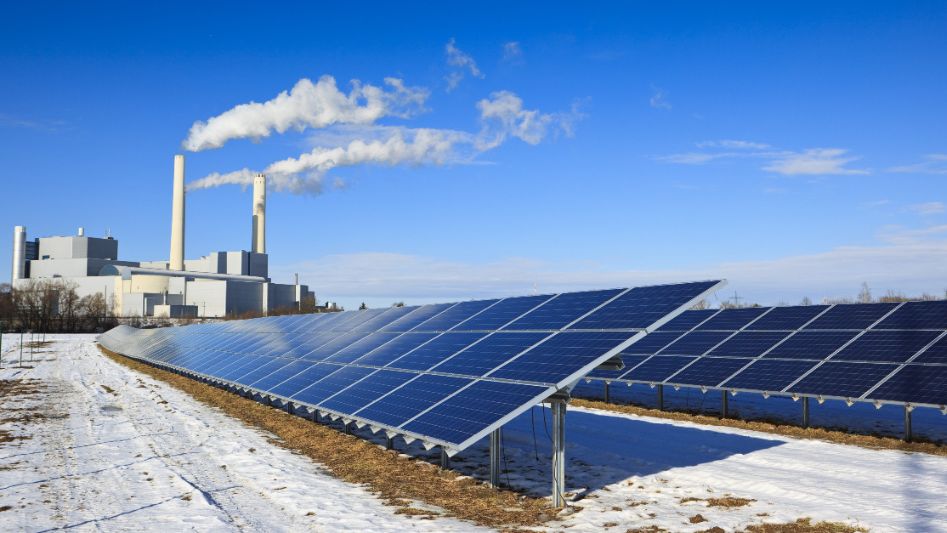In today’s world, the need for renewable energy has become more pressing than ever before. With the adverse effects of pollution and climate change looming over us, it is essential to explore alternatives that can help us transition from pollution to power. Renewable energy offers a promising solution to this global challenge, providing a sustainable and environmentally friendly way to meet our energy needs. In this article, we will delve into the transformative potential of renewable energy and its ability to revolutionize our world.
Table of Contents

The Power of Renewable Energy
Renewable energy sources, such as solar, wind, hydro, and geothermal power, harness the energy provided by nature and convert it into usable forms without depleting natural resources. Let’s explore how these renewable sources can pave the way for a cleaner and more sustainable future.
Solar Energy: Illuminating Our World
Solar energy is derived from the sun’s radiation and has the potential to revolutionize the way we generate electricity. By installing solar panels on rooftops and utilizing large-scale solar farms, we can harness this abundant source of energy. Solar energy offers numerous benefits, including:
- Reduced carbon emissions: Solar power produces zero greenhouse gas emissions, mitigating the harmful effects of climate change.
- Abundant and inexhaustible: The sun provides an unlimited supply of energy, ensuring a constant power source.
- Cost-effectiveness: With advancements in technology, the cost of solar panels has significantly decreased, making solar energy more affordable for individuals and businesses alike.
Wind Energy: Harnessing the Power of the Breeze
Wind energy utilizes the kinetic energy of wind to generate electricity. As the wind blows, it spins wind turbines, which convert the rotational motion into electrical power. Here are some key advantages of wind energy:
- Clean and renewable: Wind power produces no greenhouse gas emissions, making it a clean and sustainable energy source.
- Vast potential: Wind is an abundant resource found in many regions worldwide, allowing for the widespread adoption of wind farms.
- Job creation: The wind energy sector creates jobs in manufacturing, installation, and maintenance, contributing to economic growth.

Hydro Energy: Tapping into the Power of Water
Hydropower harnesses the energy of flowing or falling water to generate electricity. Dams or other structures capture the energy of the water, which is then converted into mechanical or electrical power. Let’s explore the advantages of hydro energy:
- Renewable and reliable: Hydropower relies on a continuous water cycle, making it a sustainable and dependable energy source.
- Low operational costs: Once the infrastructure is in place, hydropower plants have relatively low operating costs, leading to long-term economic benefits.
- Water management: Hydropower projects often incorporate water management systems, such as reservoirs, providing additional benefits like flood control and irrigation.
Geothermal Energy: Tapping into Earth’s Heat
Geothermal energy harnesses the heat stored beneath the Earth’s surface to generate electricity or provide heating and cooling for buildings. Here are some advantages of geothermal energy:
- Renewable and reliable: Geothermal energy relies on the Earth’s internal heat, which is constantly replenished.
- Low emissions: Geothermal power plants emit minimal greenhouse gases, reducing the carbon footprint.
- Long lifespan: Geothermal systems have a long operational lifespan, providing a stable and consistent source of energy.

Conclusion
From pollution to power, renewable energy offers a promising path to transform our world. By embracing solar, wind, hydro, and geothermal energy, we can reduce our reliance on fossil fuels, mitigate climate change, and create a cleaner and more sustainable future for generations to come. The time to act is now, and together, we can harness the power of renewable energy and pave the way for a better tomorrow.
FAQ
How can renewable energy transform our world?
Renewable energy can transform our world by reducing reliance on fossil fuels, decreasing greenhouse gas emissions, and promoting sustainable development. It offers a cleaner and more sustainable energy future for generations to come.
Are renewable energy sources cost-effective?
While initial setup costs for renewable energy systems may be higher, the long-term benefits, such as reduced energy bills and environmental savings, make them cost-effective investments.
What are the environmental benefits of renewable energy?
Renewable energy sources produce little to no air or water pollution and do not release greenhouse gases, contributing to improved air quality and reduced climate change impact.
What challenges are associated with renewable energy?
Challenges related to renewable energy include intermittency (as some sources depend on weather conditions), initial costs, and the need for infrastructure development and grid integration.
You May Also Like
- POLLUTION SOLUTIONS: HOW RENEWABLE ENERGY CAN HELP
- THE RISE OF GREEN ENERGY: HOW RENEWABLE SOURCES ARE RESHAPING THE ENERGY LANDSCAPE
- REVOLUTIONIZING ENERGY: HOW GREEN TECHNOLOGY IS CHANGING THE GAME
- CLEAN ENERGY, CLEAN WORLD: HOW RENEWABLE ENERGY CAN SAVE THE PLANET
- WHAT IS WASTE TO ENERGY? PROS AND CONS
